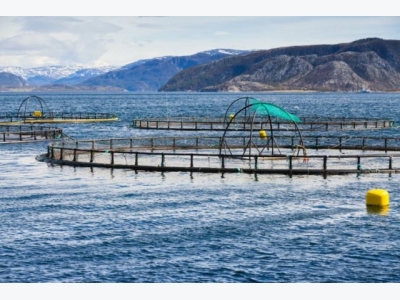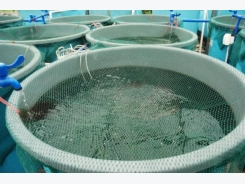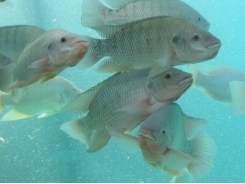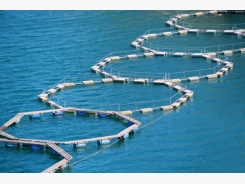Researchers question the environmental benefits of using food crops in farmed fish diets

Increasing the use of crop-based ingredients in farmed fish feed as fishmeal and fish oil inclusion levels are minimized is not a panacea, say researchers.
The US and Canadian academics, writing in Environment International, said that over one third of global crop production is currently used to feed animals, and that agriculture is already one of the top contributors to global environmental degradation (Foley et al., 2011).
And, thus, the increasing use of soy and other food crops in farmed fish feed is likely to exacerbate the problem, wrote the researchers, who are based, in the main, at John Hopkins University in Maryland.
The team said often the shift to crop-based ingredients for aquaculture feed is presented in the scientific literature and elsewhere as a sustainable alternative to marine based ingredients (Gatlin et al., 2007 and Naylor et al., 2009).
The most likely reasons for this perspective, wrote the researcher, is the relatively small size of the aquaculture industry (which currently consumes ~ 4% of feed crops Troell et al., 2014) and the efficient use of feed inputs compared to terrestrial animal agriculture.
“Feed is converted to animal biomass more efficiently in aquaculture in part due to the buoyancy provided by the aquatic environment and because farmed aquatic species are mostly ectothermic (i.e., cold blooded) (Naylor et al., 2009 and Torrissen et al., 2011).
“FCRs for farmed fish (1–2.5) are lower than or similar to chicken (2.5), and significantly lower than swine (5) and beef cattle (5–20) (Sampels, 2014 and Smil, 2002).
“Therefore, if global consumption of animal products remained constant and aquaculture replaced significant portions of global livestock production, we would expect a reduction in the total amount of feed needed to produce the same amount of animal protein, and a reduction in the environmental and public health impacts associated with crop production for animal feed.
“In reality, rising incomes in China, Mexico, South Korea and other countries are leading to increasing global demand for animal protein (Smil, 2002 and Tilman et al., 2011).
“Therefore, an increase in aquaculture production is not likely to lead to a decrease in other forms of land-animal production, and instead may cause further stress on environmental resources,” concluded the authors.
They also noted that crop yield trends are not on track to meet projected demand (Ray et al., 2013), and climate change will increasingly disrupt crop production, wild fisheries, and aquaculture.
To meet new demand, global production of commercial aquaculture feed increased 106% from 2000 to 2008, and is projected to increase 124% between 2008 and 2020 found Tacon and Metian, 2015 and Tacon et al., 2011.
The absolute amount of fishmeal (FM) and fish oil (FO) used in fish feed, for the past few years, has remained relatively flat, a trend that is likely to persist, and the farmed fish sector has made substantial effort to lower proportions of FM and FO in formulated feeds noted Tacon et al., 2011 and Naylor et al., 2009.
As such alternative ingredients, largely those derived from commodity agricultural crops, are increasingly used to meet most of the new demand for aquaculture feed say Tacon et al., 2011.
And Troell et al., 2014 reported the top five crops used in commercial aquaculture feed on a production basis by weight are: rapeseed/canola (~ 26% of plant-equivalent aquaculture feed crop production), soybean (~ 26%), maize (~ 13%), nuts (~ 12%), and wheat (~ 9%).
Additional reviews
Others have explored potential consequences of using crop-based feeds for aquaculture:
Belton et al. (2010) criticized a sustainability certification standard for farmed tilapia in part because the soy used in the feed was associated with negative consequences of expanding soy production in general.
Most recently, Pahlow et al. (2015) modeled the water footprint of various feed formulations to compare species and estimate the global freshwater footprint of commercial aquaculture feed.
Those authors estimated that between 31 and 35 km3 of water were used to grow crops for commercial aquaculture feed in 2008, and showed that the water footprint associated with aquaculture feed increases with the use of terrestrial crop-based ingredients.
Comprehensive ingredient tracking
The John Hopkins university researchers, in this paper, called for an examination of the potential costs and benefits of increased aqua feed production to properly assess the sustainability of the farmed fish sector.
“To support these analyses, nutritional content should be monitored and the supply and demand of all ingredients used in aquaculture feed, including how and where they are produced, should be systematically tracked.
These data are needed to make a full assessment of resources used, potential risks to public health, and agro-environmental tradeoffs associated with increasing land-based feed production,” said the authors.
Related news
Tools

Phối trộn thức ăn chăn nuôi

Pha dung dịch thủy canh

Định mức cho tôm ăn

Phối trộn phân bón NPK

Xác định tỷ lệ tôm sống

Chuyển đổi đơn vị phân bón

Xác định công suất sục khí

Chuyển đổi đơn vị tôm

Tính diện tích nhà kính

Tính thể tích ao




 Multiple lysine forms support growth, production of catfish,…
Multiple lysine forms support growth, production of catfish,…  Periphyton availability in tilapia production may boost weight…
Periphyton availability in tilapia production may boost weight…